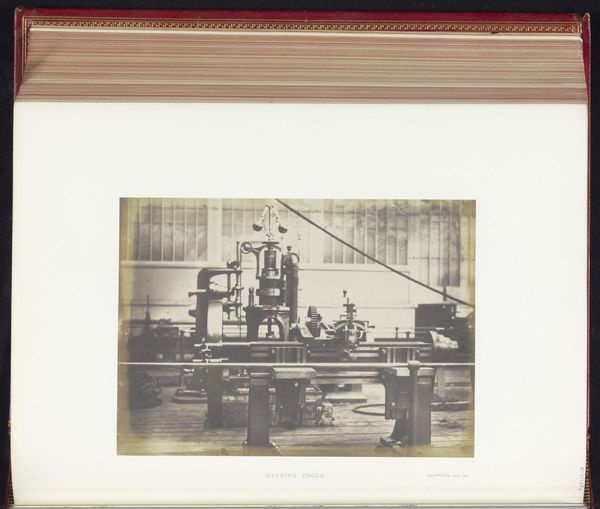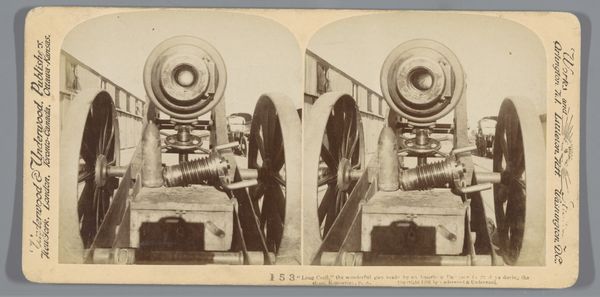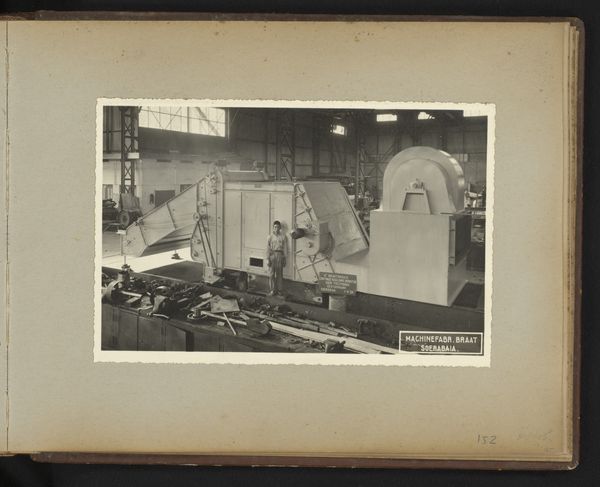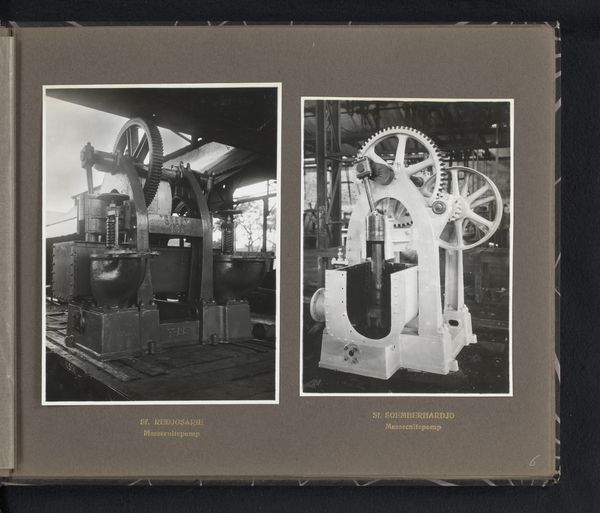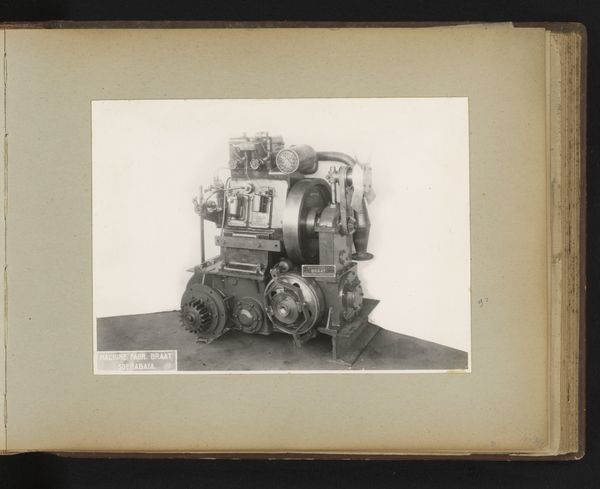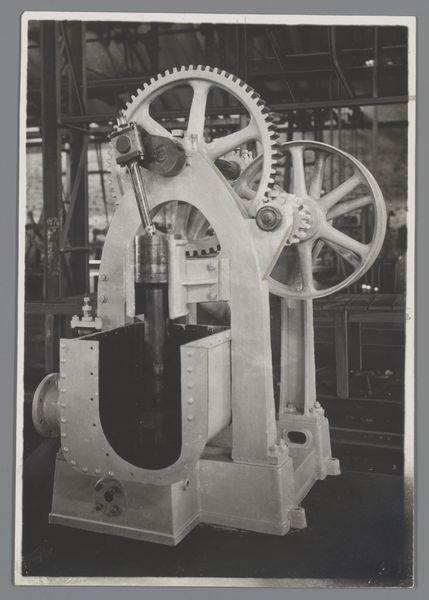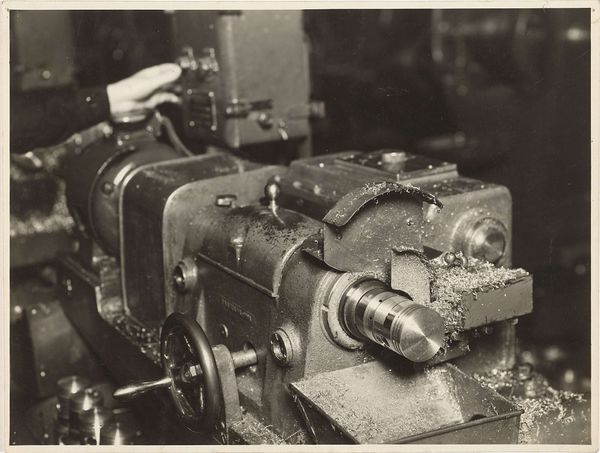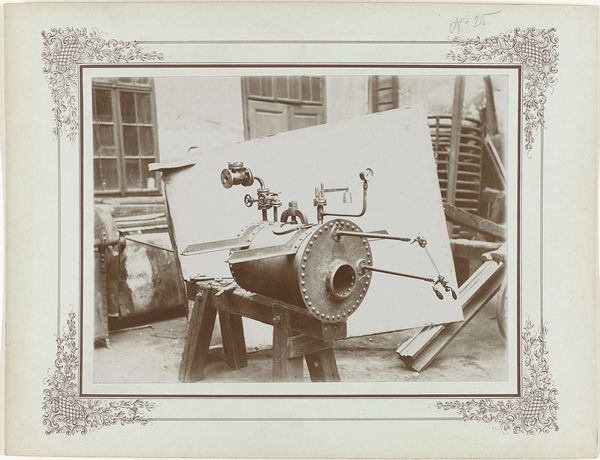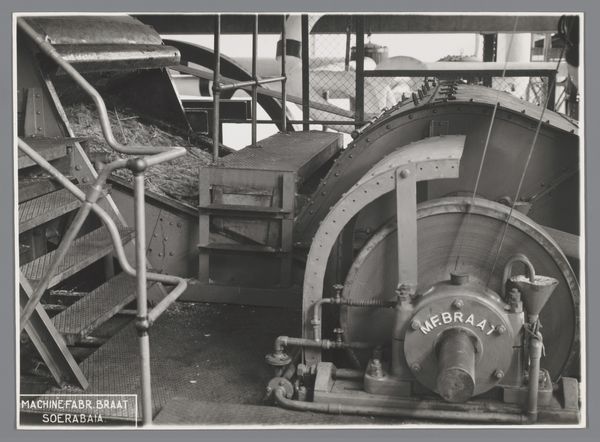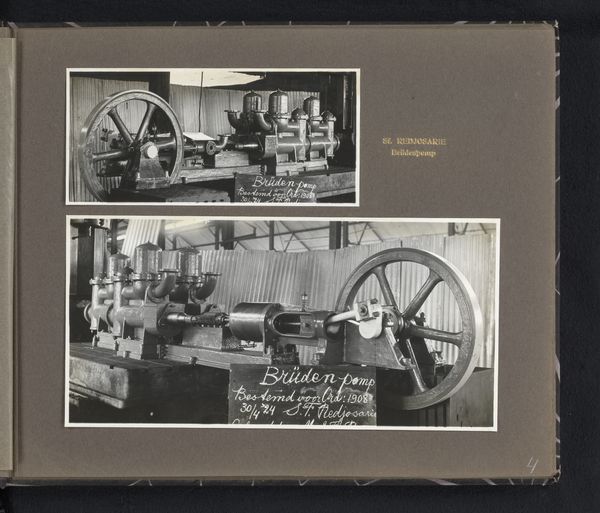
print, photography
#
precisionism
# print
#
photography
Dimensions: height 82 mm, width 115 mm
Copyright: Rijks Museum: Open Domain
Curator: This is “Machineonderdelen” by Alfred Krauth, a photograph printed sometime between 1920 and 1936. Editor: My first impression is how monumental yet sterile it seems. The textures, the muted grayscale... almost unsettling. What catches your eye first? Curator: The precision, undeniably. Krauth’s use of photography echoes the broader Precisionist movement – celebrating industry through meticulous detail. However, let's also think about labor during this time, the worker's role in operating this imposing machine. How did it reshape human interaction and power? Editor: That's a crucial point. Yet, beyond its socioeconomic implications, consider its composition: stark geometry, overlapping planes, careful use of light and shadow. These elements elevate the mechanical to something visually captivating. It transcends being a mere documentary photograph. It’s a constructed image. Curator: Exactly, its artistry prompts us to delve deeper into how industrial progress impacted social structures. Women entering factories during wartime, the shifting dynamics of class...Krauth gives us a lens to reflect. Editor: And let's acknowledge the obvious technical artistry to compose an almost hyperrealistic, very seductive image. The textures alone are compelling and seductive. What else could this evoke other than hard work and struggle? Curator: Precisely, the interplay of art and socio-political realities. What about its resonances with later movements like social realism or even contemporary debates around automation? The conversation around technology and labor isn't new; it's continually evolving, with artists such as Krauth providing pivotal early commentary. Editor: Indeed. By understanding how Krauth constructs space and manipulates light, we appreciate its form. It all reflects a dynamic interplay between image making as document and artwork. Curator: Ultimately, Krauth presents a challenge to interrogate art’s role as both observer and instigator within a shifting social landscape. Editor: And through the study of this artwork's structure, tone and materiality, we have expanded the narrative and context.
Comments
No comments
Be the first to comment and join the conversation on the ultimate creative platform.

